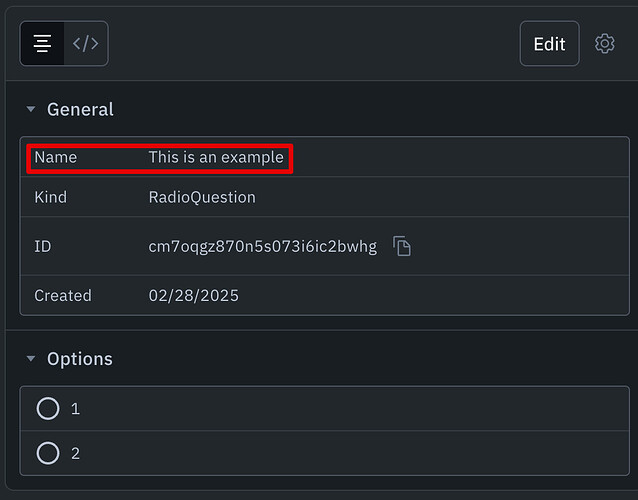When creating ontologies for classification features there are many drop-downs that seem to take the same information. As an example, if we create a RadioQuestion global classification
there is a class name and class value box. We get yet another field to enter each answer option. It is not clear to me what the difference between the name and value fields are for classes, especially binary classification. If I am classifying images of avocados and I want to know whether the pit is showing, my ontology is riddled with duplicate information to get the radio button:
This makes for rather unpleasant parsing of the Label objects, e.g.
{“featureId”:“xyz”,“schemaId”:“xyz”,“scope”:“global”,“title”:“avocado?”,“value”:“avocado”,“answer”:{“featureId”:“xyz”,“schemaId”:“xyz”,“title”:“yes”,“value”:“yes”,“position”:0}}
What is the best practices on using these fields (particularly for binary classification) to prevent redundant information?

